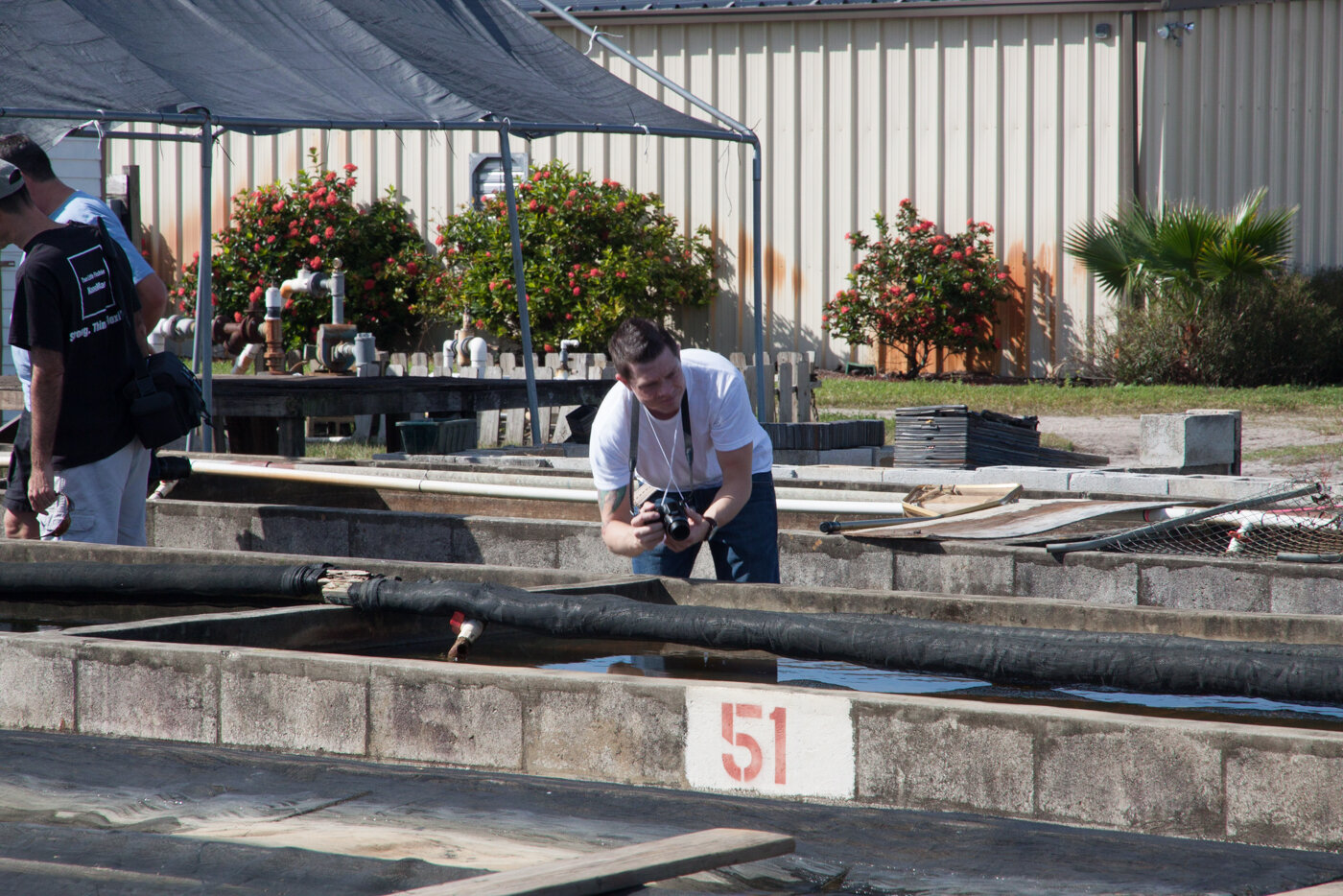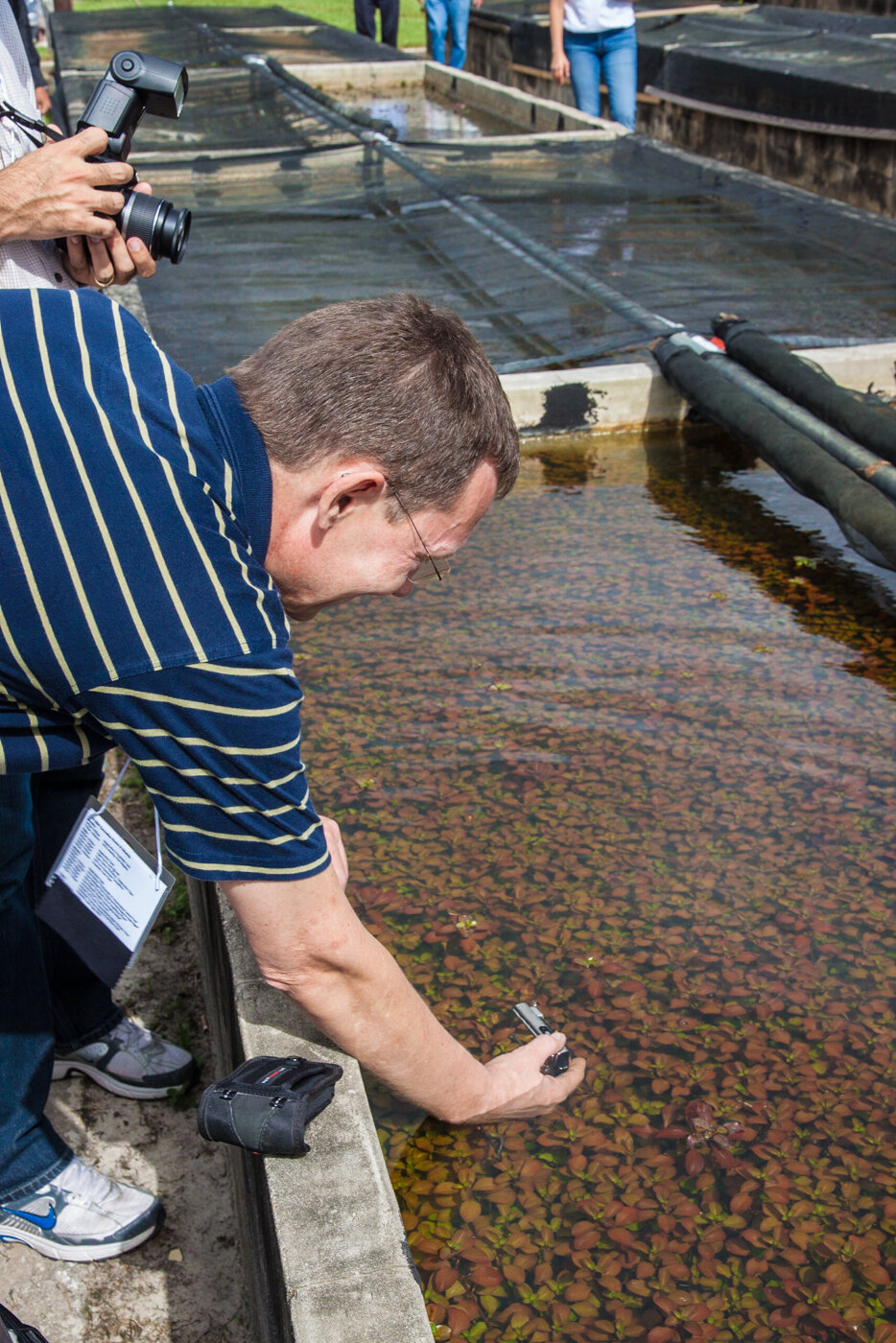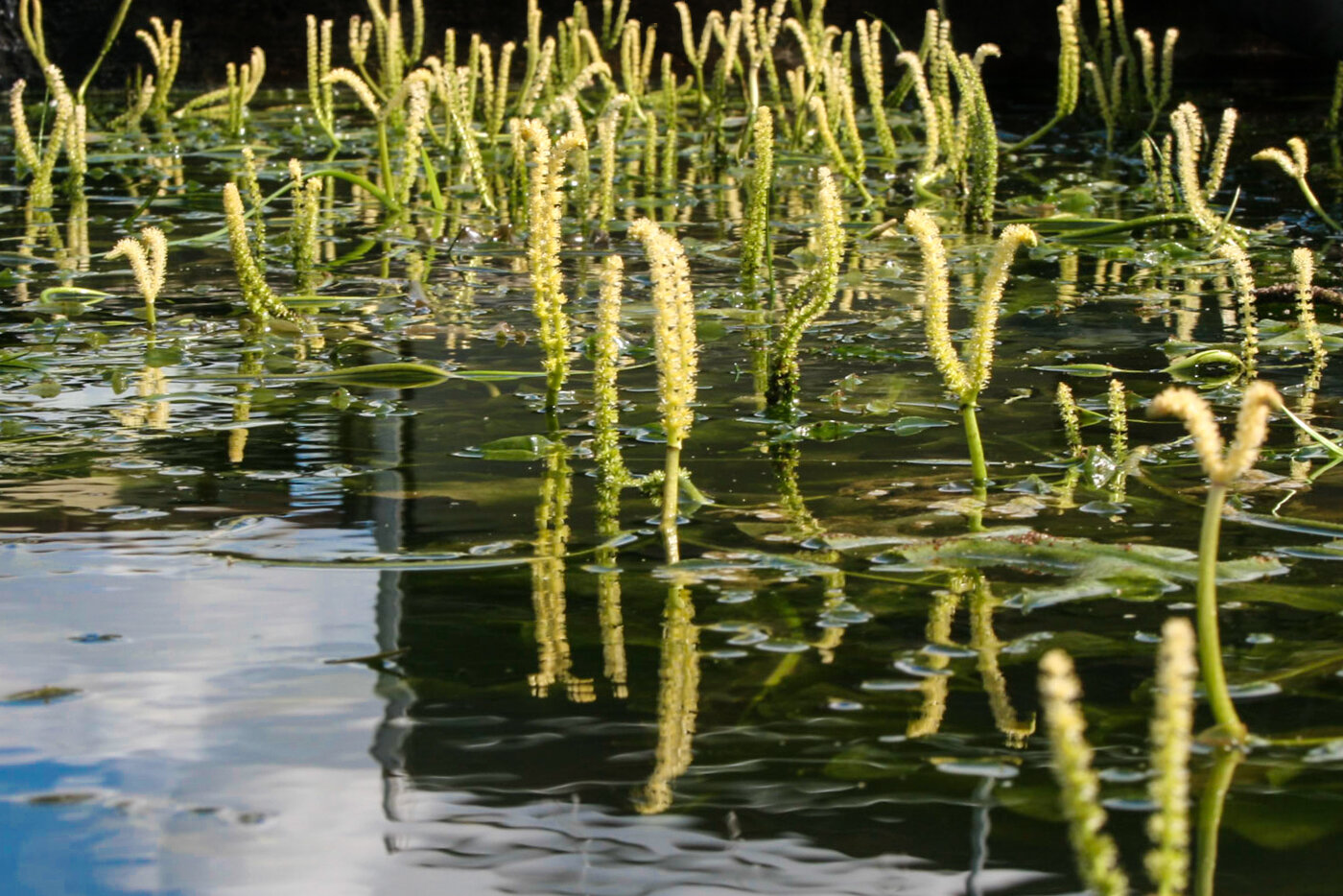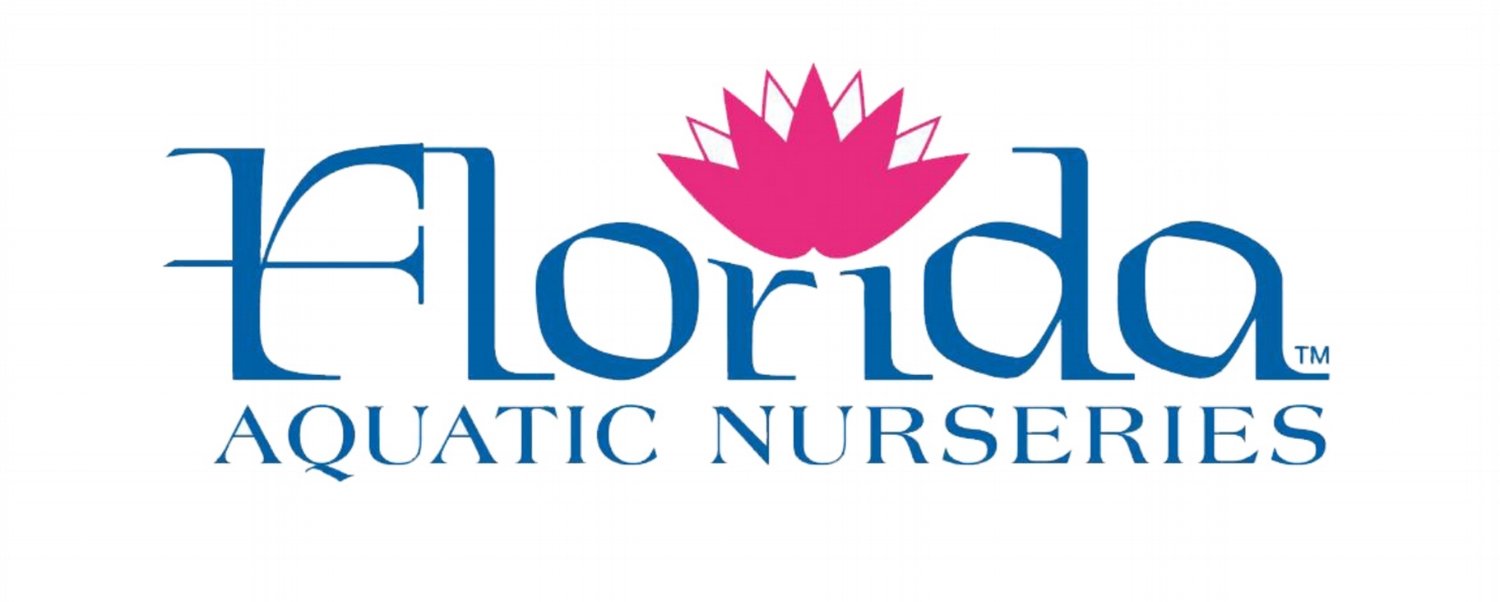From time to time, we get a question that we think might be of interest to other readers, and we will publish it here.
Mayuresh Visswanathan wrote:
I've been watching a lot of videos about the nursery, and I've noticed that you grow some submersed plants in large concrete pools. It appears to be almost no-tech: there's no pumps, filters, or visible CO2 injection.
How are you able to produce such large volumes of submersed plants without CO2? What are your methods of doing so?
Here is what Brandon McLane, owner of Florida Aquatic Nurseries had to say:
We grow all of our submersed aquatics in outdoor concrete tanks. The plants range from Aponogeton sp. to Cryptocorynesp. to Crinum to Rotala and many more. All are grown in a similar fashion with a sand substrate that fertilizer is placed into on a periodic basis for nutrients. The lighting is natural sunlight and the water source is our well. Often times shade cloth is placed over the tanks to keep the lighting down and help the plants grow. South Florida has hard water as the aquifer is limestone encased. The water valves to the tanks are left on a slow trickle to replace evaporation and thus creating a flow through system. Because of this there is no need for pumps or CO2. Would the addition of CO2 result in more growth? Yes it would, but at this time we do not need faster growth because we have enough space. Thus enabling us to keep our costs down to consumers by not having to install a CO2 system. We do not have a need for filtration system as this is done manually through the cultivation processes.






Karen Randall, Author of Sunken Gardens, further asked Brandon:
I wonder if you have checked your well water for CO2 concentrations? I know that a lot of aquifers that go through similar calcium carbonate ground carry a lot of CO2. You might also be feeding the plants with CO2 with that slow trickle of flow-through water.
Brandon responded:
You are correct, that the plants are getting some CO2 from the water source. However, it is not near the amount that adding supplemental CO2 would provide.
Karen’s final response was:
The level of CO2 from the well water is lower than in many aquarists tanks, yes, that is true, but the big difference is that, as we see in nature, if you are constantly bringing in new water, it is not a closed system. So the plants never run out of CO2. From what we see from studying plants in natural streams, that is a HUGE factor in healthy plant growth.
In some places in nature, you find areas totally filled with aquatic plants, like this section of the Thodupuzah River In India. Because of the constantly flowing water, the plants never run out of CO2, and at the same time, the water is constantly refreshed and cleaned. This river actually had a higher level of CO2 than many do, which is why we see such really strong growth, even in rather swift-flowing water. (the specific water parameters of this among many other biotopes can be found in Christel Kasselman’s new book, “Aquarium Plants”) We hope to be able to offer this book to you directly later this year. (Covid problems!)

